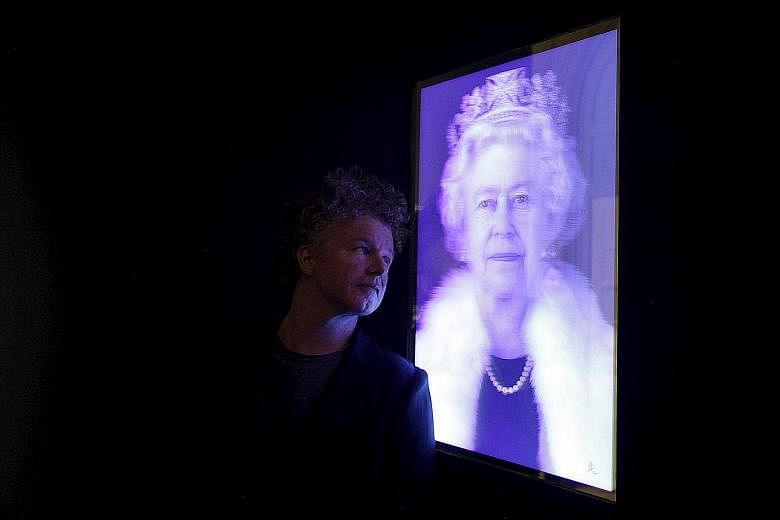LONDON • What do John Lennon, Margaret Thatcher, Henry VIII and West Indian immigrants in 1956 London have in common?
They are all, according to British historian Simon Schama, part of The Face Of Britain.
Schama - known to audiences worldwide for his 15-part documentary, A History Of Britain - has curated a small but delightfully precise exhibition at London's National Portrait Gallery.
It takes a thematic approach. Rather than starting with portraits of early Britons and heading towards the modern, the exhibition is presented in five rooms dedicated to Power, Love, Fame, Self and People.
This approach allows for some fascinating juxtapositions.
In Power, for example, Thatcher, Britain's first woman prime minister, shares space with Henry VIII, the king who ruled England from 1509 to 1547.
Both portraits - respectively, a sitting by Rodrigo Moynihan and a painting by George Vertue after Remigius van Leemout and Hans Holbein the Younger - tell a tale about their subjects.
Henry is portrayed with his third wife, Jane Seymour, and also with his parents, Henry VII and Elizabeth of York.
The message is one of legitimacy in a dynasty - the Tudors - that at the time was still fairly vulnerable.
The Thatcher portrait was apparently subject to much interference from the sitter, who was renowned for her strident views and penchant for control. The painting, as a result, is rather bland.
Elegant juxtapositions continue in the Love gallery, where Beatle Lennon shares the walls with George, Prince of Wales, and his older, commoner mistress of circa 1784 onwards, Maria Fitzherbert.
Both have poignant stories. The Lennon portrait - the famous photograph by Annie Leibowitz of a naked Lennon curled up on his clothed wife, Yoko Ono - was taken a few hours before he was assassinated in 1980.
George, meanwhile, is said to have died as King George IV in 1830 with a miniature of Fitzherbert around his neck.
"The craving to keep the ones we love close to us never goes away," says an introduction to the Love gallery.
"If they can't be with us, having their likeness can turn absence into presence, divide distance and even defy death."
The exhibition, befitting the nature of the gallery itself, does not limit itself to painting and photographs.
For example, pride of place in the Fame room - where Diana, Princess of Wales, naval officer Horatio Nelson and William Shakespeare can be found - is a display of 50 cigarette cards from 1926 of contemporary celebrities, including a youngish Winston Churchill, Charlie Chaplin and poet G.K. Chesterton.
Elsewhere, there is a lenticular portrayal of Queen Elizabeth II and sculptor Marc Quinn's self-portrait made with his own blood.
Ordinary people also get a look in. A series of photographs taken in Torquay around 1900 presents people such as a chair-mender and a crab salesman.
Similarly, Jamaica-born photographer Charlie Phillips offers a glimpse of London's pre-gentifried multiracial Notting Hill Gate.
The free exhibition runs until Jan 4.
REUTERS

